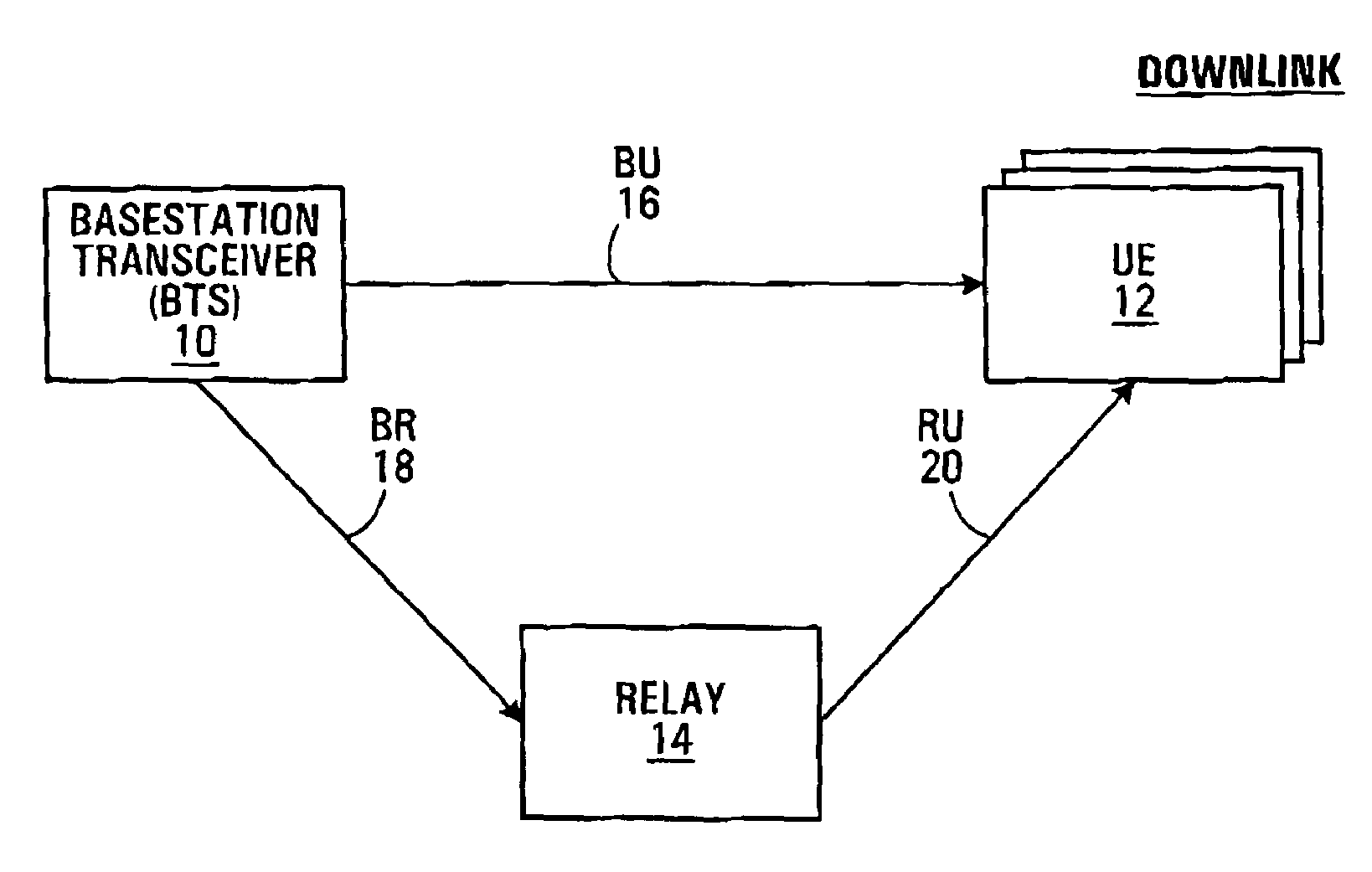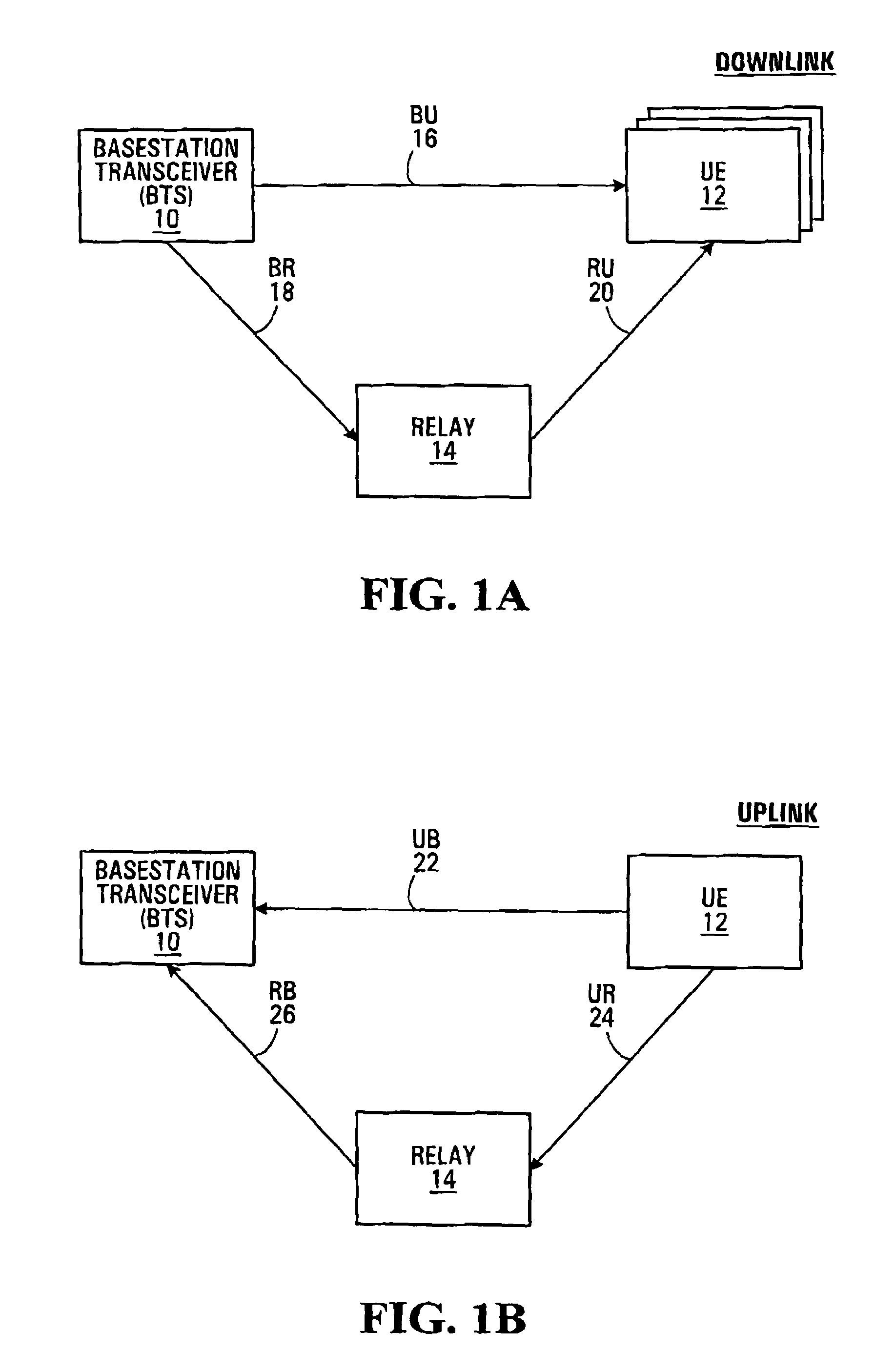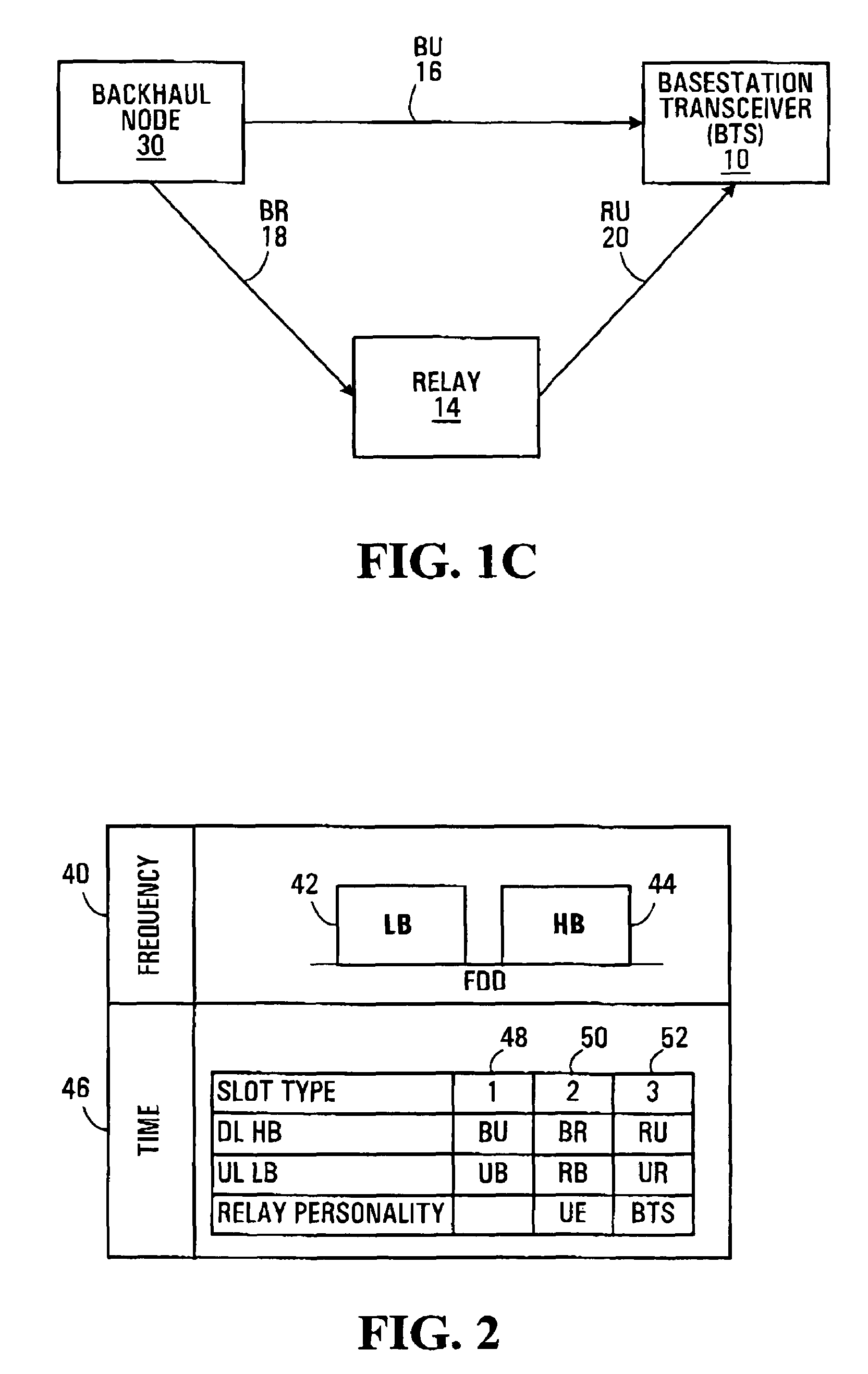Method and apparatus for relaying a wireless signal
a wireless signal and wireless technology, applied in the field of wireless signal relaying methods and apparatuses, can solve the problems of noise amplification and require very stringent transmit to receive isolation
- Summary
- Abstract
- Description
- Claims
- Application Information
AI Technical Summary
Benefits of technology
Problems solved by technology
Method used
Image
Examples
Embodiment Construction
[0049]Embodiments of the invention will now be described with reference to FIGS. 1A and 1B. Each of these figures shows a BTS (Base Station Transceiver) 10, a wireless relay 14, and a user equipment (UE) 12. The BTS 10 might for example be a normal cell site base station, and would be capable of delivering the full services to the UE 12, whatever those services might be. In a given network, typically there would be a collection of BTSs 10. The UE 12 is a wireless terminal which may be fixed or mobile and is obtaining service via the BTS 10. Typically, there would be a large number of UEs 12 within the coverage area of the BTS 10. Relay 14 is a node within the coverage area of BTS 10 which implements a relaying function to extend the coverage area beyond the normal range of the BTS 10. In FIG. 1A, the potential connectivities between the nodes 10,12,14 in respect of downlink communications from the BTS 10 to the UE 12 are shown. There is the possibility for direct communications from...
PUM
 Login to View More
Login to View More Abstract
Description
Claims
Application Information
 Login to View More
Login to View More - R&D
- Intellectual Property
- Life Sciences
- Materials
- Tech Scout
- Unparalleled Data Quality
- Higher Quality Content
- 60% Fewer Hallucinations
Browse by: Latest US Patents, China's latest patents, Technical Efficacy Thesaurus, Application Domain, Technology Topic, Popular Technical Reports.
© 2025 PatSnap. All rights reserved.Legal|Privacy policy|Modern Slavery Act Transparency Statement|Sitemap|About US| Contact US: help@patsnap.com



